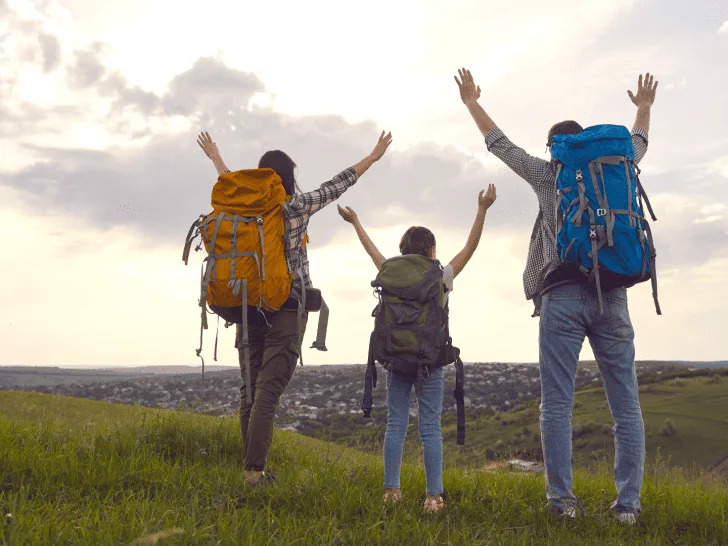Who wants a vacation filled with the same things you do every day? For a true break in your routine that teaches you new skills and reacquaints you with what it means to be human, try a backpacking excursion! We will cover where should you go, and what do you need to know for beginner backpacking trips that will become great memories.
Backpacking hones crucial survival skills, such as how to set fires in damp environments, treat minor injuries and find your way without GPS.
It also gets you into the great outdoors — that magical realm that exists beyond your office door. It’s full of wonders, such as beautiful flowers and fascinating creatures, and holds all sorts of juicy health benefits.
Why plan a vacation that involves a mild spin on your daily activities? Get into the wild with our picks for the best beginner backpacking trips. These are the best locations for getting outside and learn something new about yourself and your world.
Backpacking, Defined

It may surprise you to learn that backpacking simply refers to the act of traveling from place to place while carrying your belongings on your back. Although most people visualize heading into the wild, it’s the mode of transportation, not the destination, that defines the practice.
Backpacking differs from camping in that you trek in and out with everything you need on your back. There’s no driving to the campsite and hooking up to power or even dragging your cooler from the car to the fire pit. You’ll carry your shelter, food and necessary supplies, including first aid, maps and equipment, in your back frame.
Beginner Backpacking Trips- Our Favorite Destinations

Now comes the fun part — planning your destination. There’s something for everyone right here in the United States, including newbies. Here are 16 of the hottest destinations for beginner backpacking trips that will test your mettle but still provide adequate access to services to make you feel comfortably safe.
1. The Appalachian Trail
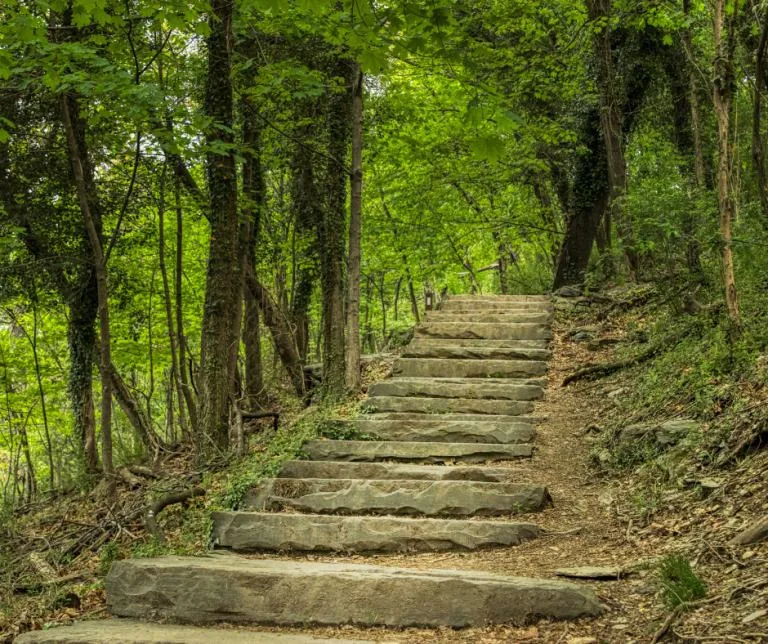
The Appalachian Trail stretches for more than 2,000 miles from Maine to Georgia. Few backpackers traverse the entire length, but this scenic system that passes through multiple states offers ample smaller excursions for beginners. Best of all, it’s readily accessible by nearly anyone on the East Coast with adequate bus fare and Uber money.
For example, Mt. Marshall Loop is a relatively short hike with great views, perfect for beginner backpackers. The trail is only 13.8 miles, including a 15-20-minute viewpoint detour that’s great for kiddos who love scaling giant boulders.
What makes it sparkle is its proximity to several paid campgrounds, including the Shenandoah Valley Campground, so those who don’t want to stay in the big woods can easily trek closer to civilization to bed down for the night.
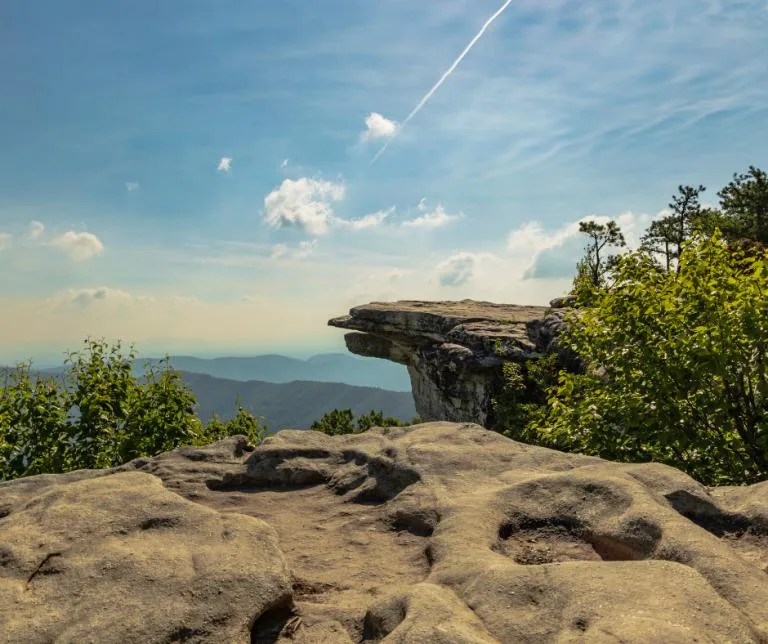
Other worthwhile backpacking treks off the Appalachian trail include:
- McAfee Knob, Catawba, Virginia
- Springer Mountain, Georgia
- Mt. Cammerer, North Carolina
- Little Rock Pond via Long Trail, Vermont
- Bald Pate Mountain and Table Rock, Maine
2. The Pacific Crest Trail
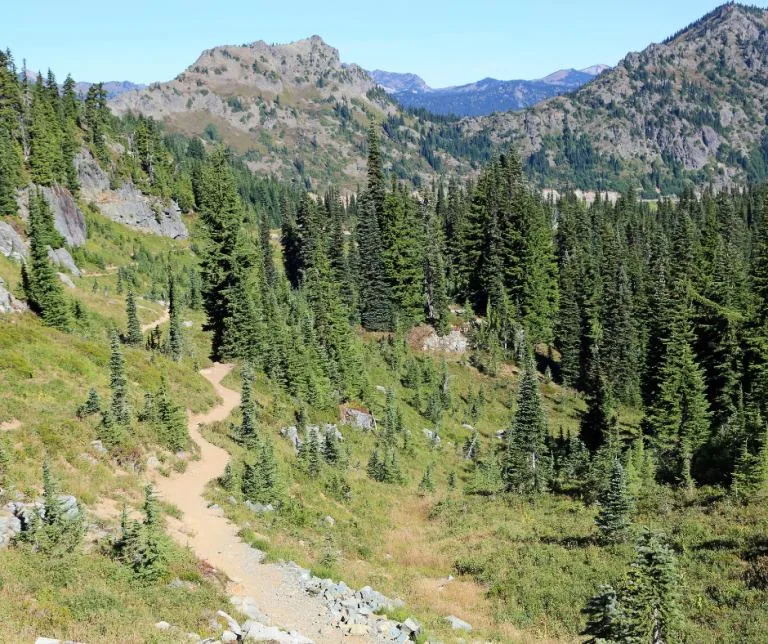
The beloved “PCT,” as it’s known in hiking parlance, suffered quite the wallop in 2023, with record snowfall surpassing 50 feet in some areas. Although parts of this trail are not for the faint of heart, others are perfect for beginner backpackers. The trail winds through three states and five distinct sections:
- Southern California
- Central California
- Northern California
- Oregon
- Washington
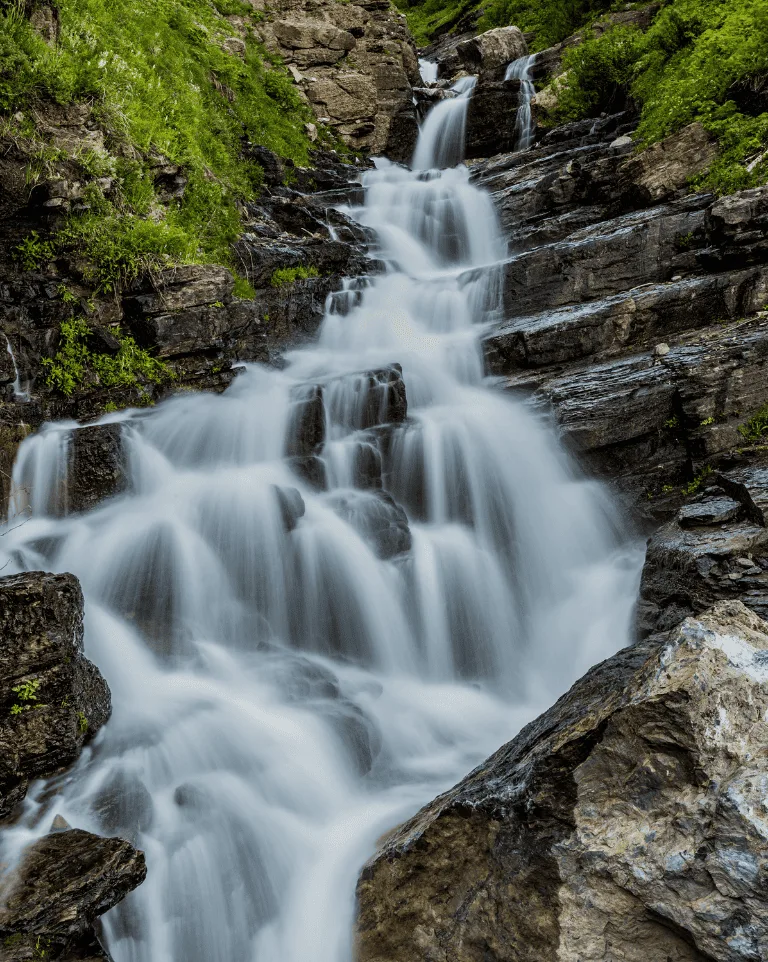
Each is unique in topography and climate, so spend time researching where you plan to go. What are some of the best two- to three-day backpacking trips along the PCT? Try these excursions:
- Chewing Gum Lake: This 4.5-mile excursion is north of Yosemite and south of Tahoe.
- Bear Lake: This seven-mile trek features a gentle 500-foot elevation gain.
- Chain Lake: The Box Springs Trailhead 4.4 miler has a more severe 864-foot elevation gain.
These are wise choices for beginner hikers since each can be done in a single day. If you’re a seasoned backpacker, here are a pair of challenging hikes in the area:
- Alder Creek Falls: This trek is ideal for heartier beginner backpackers, featuring about 8.2 miles and a 1,000-foot elevation gain.
- Waterfall Camp in the Desolation Wilderness: This is another tough one that ends in a gorgeous setting after 10.5 miles and a 1,522-foot elevation gain.
3. The Continental Divide
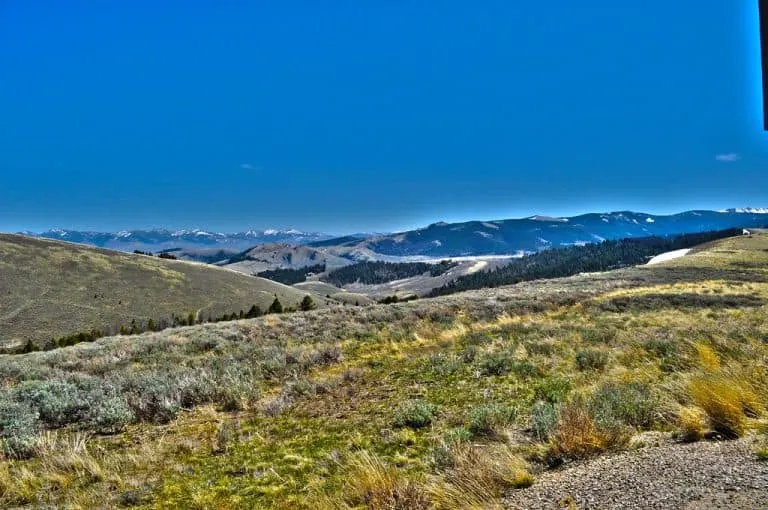
The Continental Divide rounds out the backpacking world’s illustrious triple crown — something only a hair over 500 people have ever done. It seems spending months in the great outdoors, free from other obligations, isn’t realistic for most people.
However, you can get your fix in a more reasonable time frame with one of these two- to three-day backpacking trips along the Continental Divide, spanning over 3,100 miles across five states. Explore one of the following:
- Gooseberry Springs Trail, New Mexico: Hike up Mt. Taylor, a sacred mountain among the Navajo.
- Bear Lake, Colorado: Multiple sites abound around this lake and trail system. Bring your bear spray.
- Big Meadow and Granite Falls, Colorado: This hike is great for viewing elk, moose and deer.
- Bridger Pass Road North, Wyoming: Take an optional side trip to the Teton Reservoir off this six-mile trek.
- Lemhi Pass toward Goldstone Pass, Montana: Follow the footsteps of Lewis and Clark on this variable-length trek.
4. Yellowstone National Park
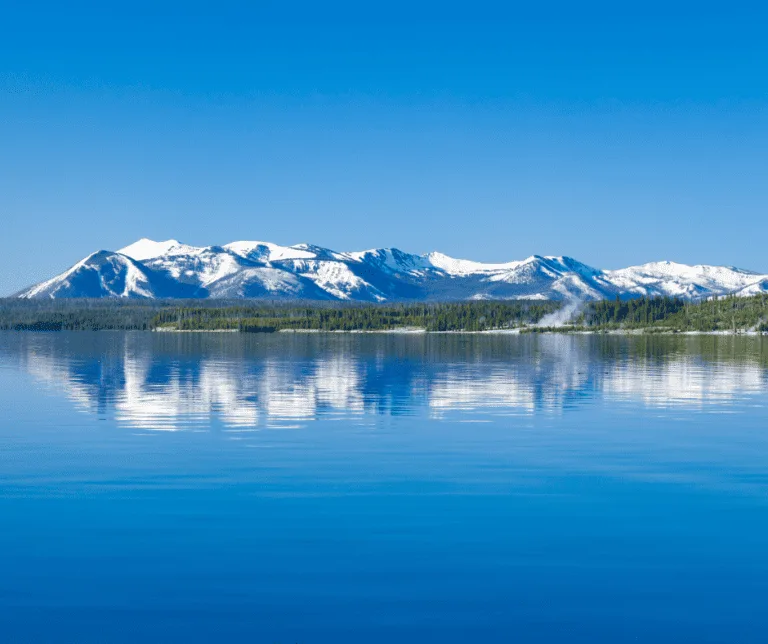
National parks sparkle for beginner backpackers because they offer various campsites and accommodations for backpackers. For example, Yellowstone National Park has ample dispersed campsites around Yellowstone Lake.
Be mindful of seasonal limitations, considering many sites close from October 15 through April due to weather conditions. Once mid-October arrives, you’ll find dispersed camping with no amenities.
Yellowstone Lake is among the best places for beginner backpackers in this extreme wilderness, and you should visit during the summer months. Summer highs typically hit the mid-70s, providing a comfortable hike through an American landmark.
The highest temperatures you can expect come from the Norris Geyser Basin, reaching 706 degrees Fahrenheit in its underground water.
Read our complete guide to all the amazing things to do in Yellowstone National Park with kids.
5. Yosemite National Park
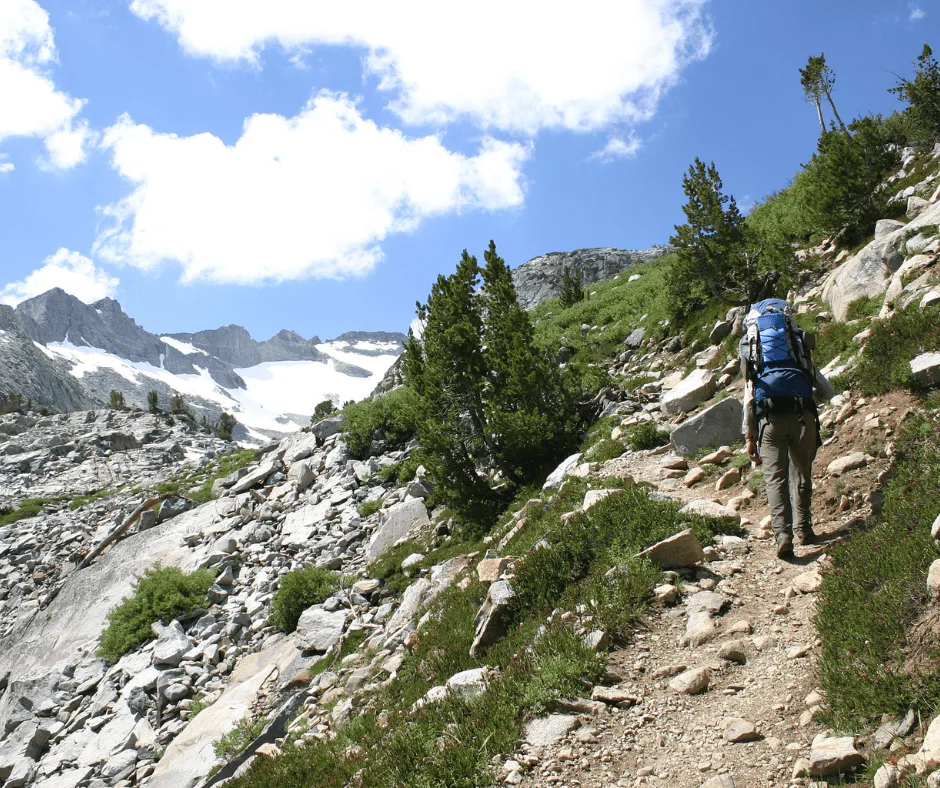
Yosemite is another national park with excellent treks for beginner backpackers. Many adventures depart from Tuolumne Meadows, a magical sight in the evening when sunset casts the fields in a mystical golden glow.
Early spring and summer are the peak times for viewing waterfalls, but make early reservations. The park charges a $35 entrance fee, which allows you to park for seven days and backpack to your heart’s delight, as long as you stay away from wild critters and carry bear spray, just in case.
Here are our favorite things to do in Yosemite with kids.
6. Joshua Tree National Park
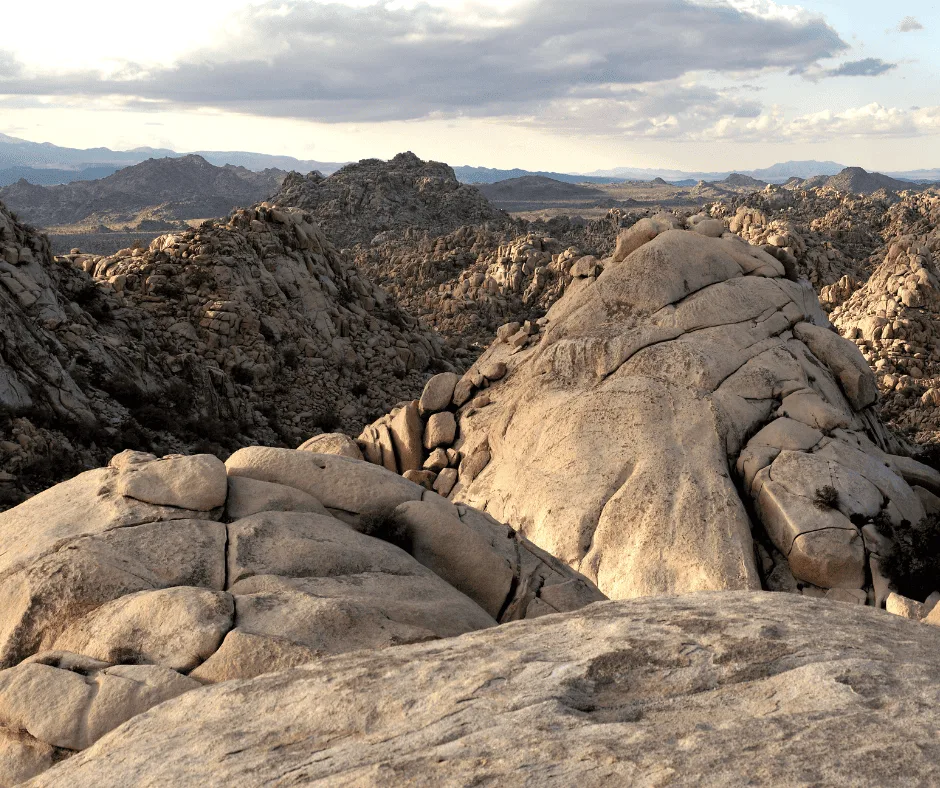
If you appreciate sunshine more than snow and ice, Joshua Tree National Park is your go-to backpacking destination. You’ll want to avoid the hottest months of June, July and August, but spring and autumn in the desert is a delight, and nighttime temps stay above freezing — although the thin atmosphere makes them feel mighty cold.
The best beginner’s backpacking trek here is the Boy Scout Trail, which takes you through the Wonderland of Rocks. While it’s tempting to let little boulderers climb to their hearts’ content, stay close to the trail to avoid getting lost. The Big Pine Trail is another trek of equivalent length that is a favorite among birders.
Check out our great guide to exploring Joshua Tree with kids.
7. Zion National Park
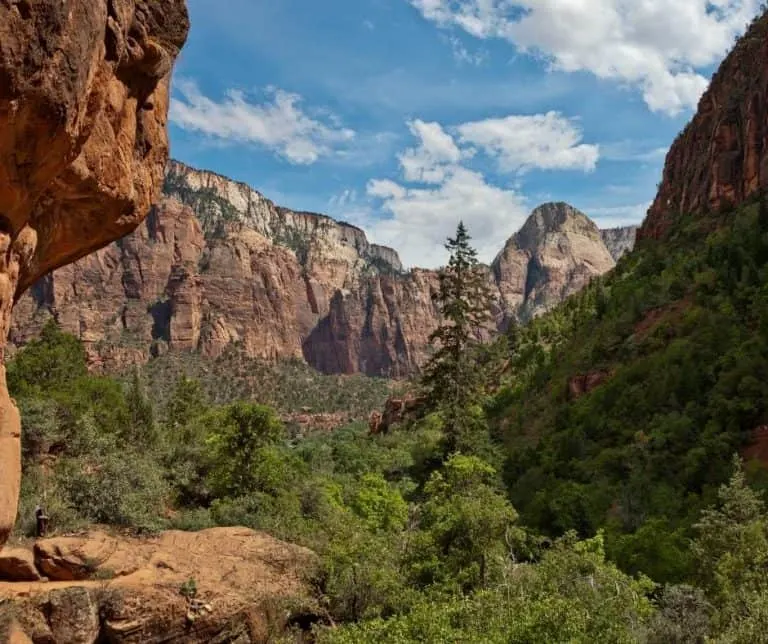
You could spend a summer in Utah visiting five national parks, but if you only have time for one, set your beginner backpacker soles on the dirt at Zion National Park.
The Angel’s Landing, West Rim and Telephone Loop is perhaps the most famous, traversing 15.5 miles over a two- or three-day span. Coalpits Wash at 7.2 miles is a great one if you have less time.
Zion is one of those all-season parks that is fun to visit any time of year. Check our guide to visiting Zion in winter and our full guide to things to do in Zion with kids.
8. Grand Teton National Park
The Grand Tetons transport you to a landscape that looks like it should be in Switzerland, right here in the United States. One of the best trails is undoubtedly the Cascade Canyon to Lake Solitude route, a 16-mile round-trip path featuring over 2,500 feet of elevation gain — spread it out over three days to make it enjoyable. You’ll find ample campsites just south of the lake, and bear spray is a must.
As you might have suspected, we have a geat guide on things to do in Grand Teton National Park as well!
9. The Grand Canyon
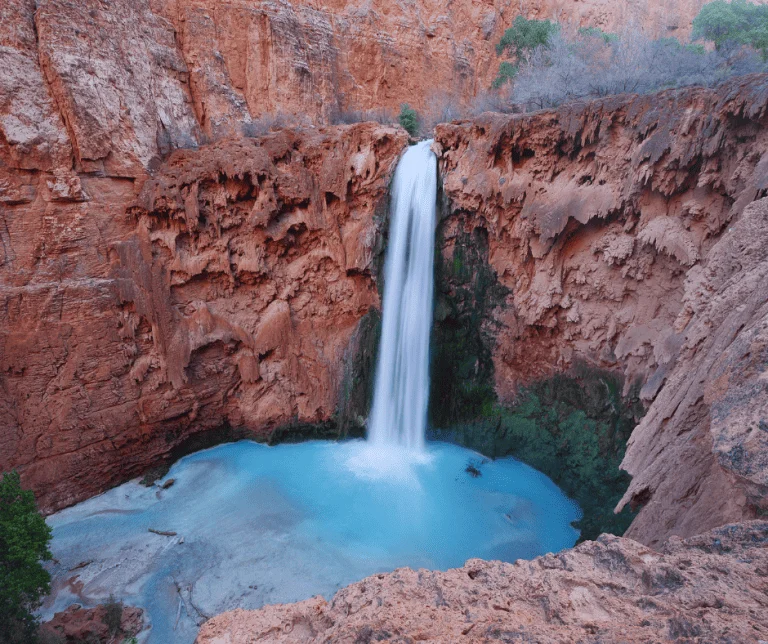
Upon arriving at the Grand Canyon, you’ll see countless signs reminding you not to attempt to hike to the river and back in one day. How else, though, to see wonders like Havasu Falls, located on the Havasupai reservation? The only way is to backpack — and make reservations well in advance.
Additionally, bring plenty of hydration. While the Colorado River is pure enough to drink from in parts, there’s not a drop to be found before reaching the Village eight miles in.
If you want to backpack inside the park, definitely make reservations for the Bright Angel Campground well in advance and secure your backcountry permit as well. The hike back up from the canyon bottom is only for advanced hikers and best for teens and tweens.
We have great guides to the Grand Canyon South Rim as well as the Grand Canyon North Rim. Both are quite distinct so I suggest trying to visit each of them over time but keep in mind that they are hours apart from each other by road.
10. Arches National Park

Your tour of the Southwest heads north to Utah once more to Arches National Park. This location is ideal for beginner backpackers as the uniquely delicate sandstone formations mean there are only four designated spots for backcountry camping.
You must carry ample water since few, if any, natural sources exist. However, the hikes to many of the most photographic spots are between half a mile and a mile and a half in length, letting you capture multiple frame-worthy pictures.
These are our favorite things to do in Arches National Park with kids.
11. Capitol Reef National Park
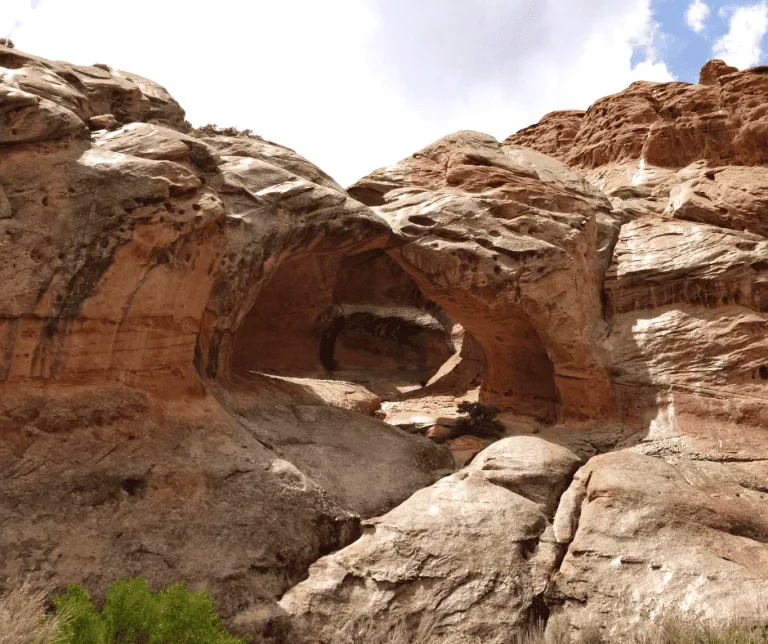
Capitol Reef is the least visited of Utah’s five national parks, making it perfect for people who relish solitude. It’s also among your cheapest options — although you’ll need a permit for backcountry camping, you can pick one up for free.
Spring Canyon and Upper Muley Twist Canyon are perfect overnight treks for beginner backpackers, while more remote locations like Halls Creek Narrows require nearly a week.
Here is our full guide to visiting Capitol Reef National Park with kids.
12. Acadia National Park
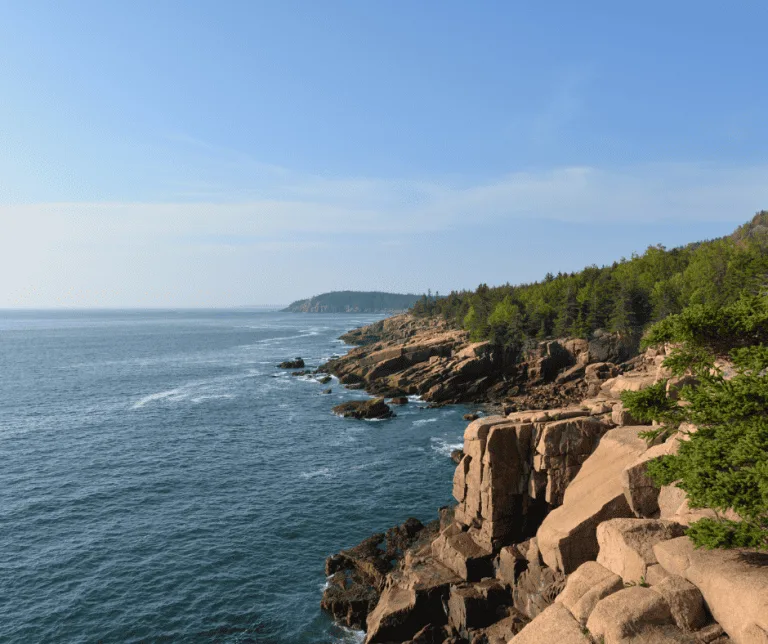
Head to the northeastern wilds of Maine at Acadia National Park for a completely different landscape. Like all such locations, it offers multiple options for backpackers.
The Mountain Carriage Loop offers inland challenges, while the easy Ocean Path Trail is perfect for families with young kids. Bernard Mountain tempts those who appreciate solitude.
Here are the best things to do in Acadia National Park with your family.
13. Sequoia National Park
Trees and mountains are taller in the west, and a visit to Sequoia National Park makes giant redwoods your nighttime canopy. Although many of the most popular routes in this forest span multiple days, Redwood Canyon is home to the largest sequoia grove in the world and is a great beginner backpacking destination.
The Hart Tree and Fallen Goliath Loop is 6.5 miles in length. It crosses Redwood Creek, past Hart Meadow, and through Tunnel Tree until reaching Hart Tree, the largest sequoia in the grove.
Mineral King is Sequoia National Park’s High Sierra destination, with several overnight hikes originating from this area. Camping is allowed as soon as 2.5 miles in on a few of the trails and all the scenery in this part of the park is spectacular.
It’s possible to do the Pear Lake as an out-and-back overnight or a three-day trek. You’ll traverse 11.9 miles and gain 3,080 feet in elevation, so it pays to hit the cardio extra hard at the gym in the weeks before your adventure.
Here are our favorite day hikes in Sequoia and Kings Canyon National Parks.
14. Ancient Lakes, Washington
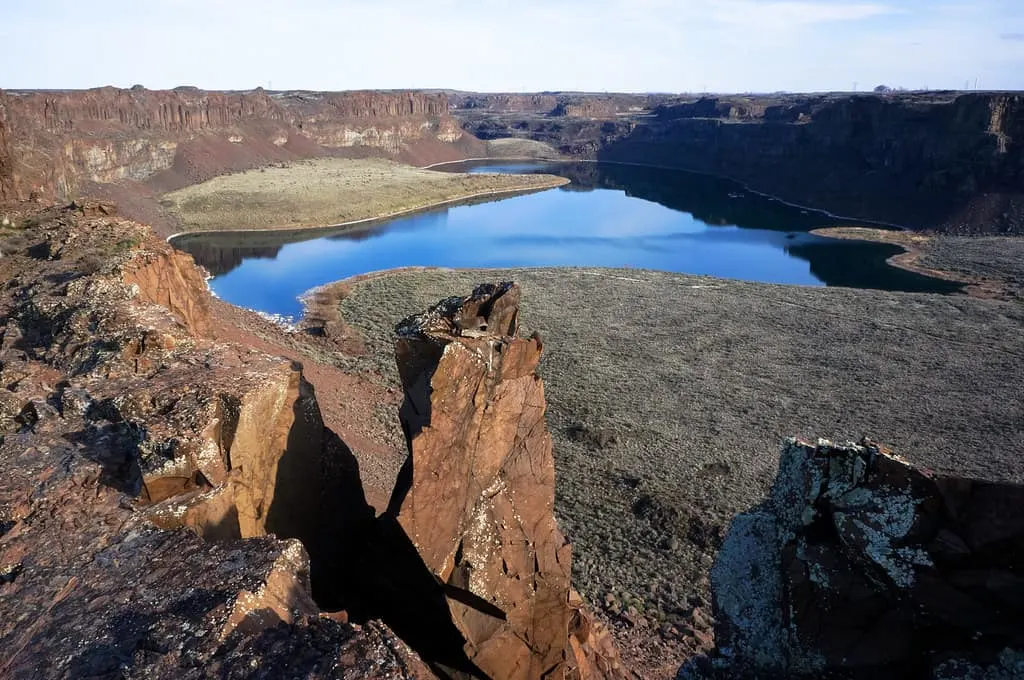
Some destinations have a unique backpacking vibe you have to experience. Ancient Lakes, Washington is one such spot.
Although the entire Ancient Lake Loop spans 12 miles, you can take numerous shorter treks and camp at any of the established sites around the lakes. Here, established means there’s a fire ring, so don’t expect toilets or running water — it’s primitive.
15. Verde Valley, Arizona
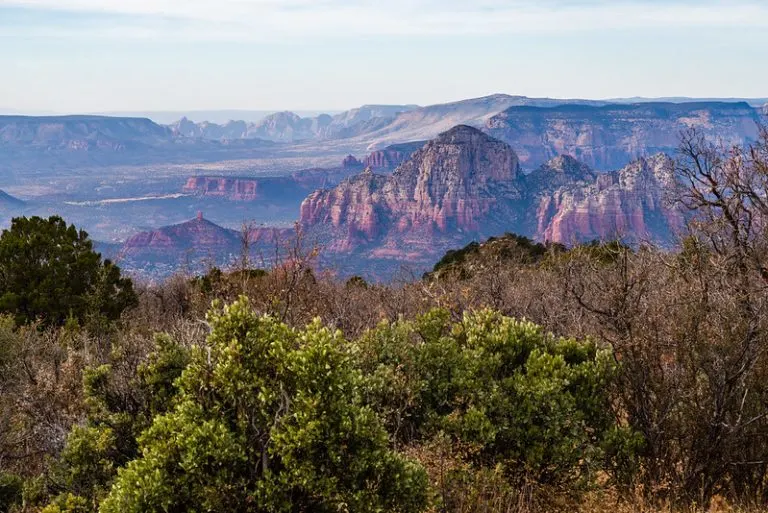
Scores of tourists flock to Sedona, the Verde Valley’s most well-known spiritual mecca, but what about the folks who come for the great outdoors? Although there’s no dispersed camping within the city limits, travel to the heart of town and take Schnebly Hill Road to the parking area before the rough stuff for the Jeep tours begins.
From there, trek the four-mile Munds Wagon Trail for some of the most breathtaking red rock scenery imaginable. Continue past the Cow Pies and ascend to the Coconino Plateau, where you can enjoy dispersed camping galore amid the elk, black bear and occasional Mexican gray wolf.
16. Superior Hiking Trail, Minnesota

The Superior Hiking Trail spans over 300 miles along Lake Superior’s north shore. While there are multiple designated campsites, you must stay within their confines and respect private property rights.
Bring extra spray in May, as ticks and mosquitoes emerge in droves, although late summer and early fall are glorious times to visit. It may be the best place to get outdoors in July while still beating the heat.
What Supplies Do You Need for a Backpacking Trip?
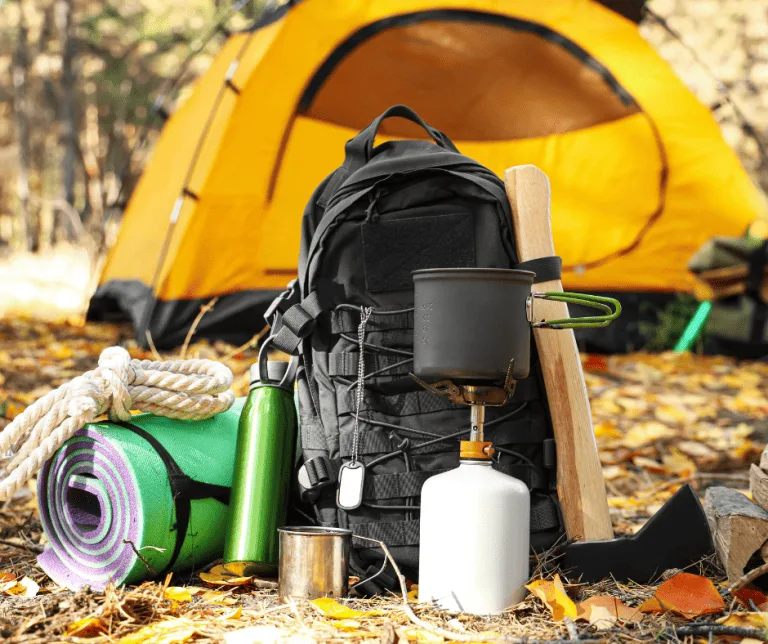
The supplies you need for a beginner backpacking trip fall into distinct categories and groups. Here’s what you should consider for each one:
- Shelter: The smaller the tent, the better for preserving body warmth. Seek a model you can set up with your trekking poles to save space, and consider adding a ground cover for added protection against the cold.
- Sleeping arrangements: While a bivvy bag will do in a pinch, the right sack for your trek’s climate preserves comfort.
- Navigation equipment: A map and compass are musts, as cellphones and smartwatches don’t always work in the wild. A satellite system like Garmin is helpful if you can afford it.
- First aid: Include prescriptions you take regularly.
- Clothing: Extra underwear and socks are musts, while the rest depends on the destination.
- Food: Ensure you get at least 2,500 calories daily.
- Water: Water weighs over 8 pounds per gallon, so invest in a bladder for your backpack and purification tools like a Lifestraw and tablets.
- Tools: Bear spray is a must in some areas. Additionally, a knife, multitool, paracord, sheet of plastic (for making solar stills in desert areas), headlamp, flashlight, power banks and charging cords are helpful.
Pro-tip: Your phone can also serve as evening entertainment. Download a few podcasts, including some scary campfire tales — the latter only if you dare.
What Should You Wear on Your Backpacking Trip?
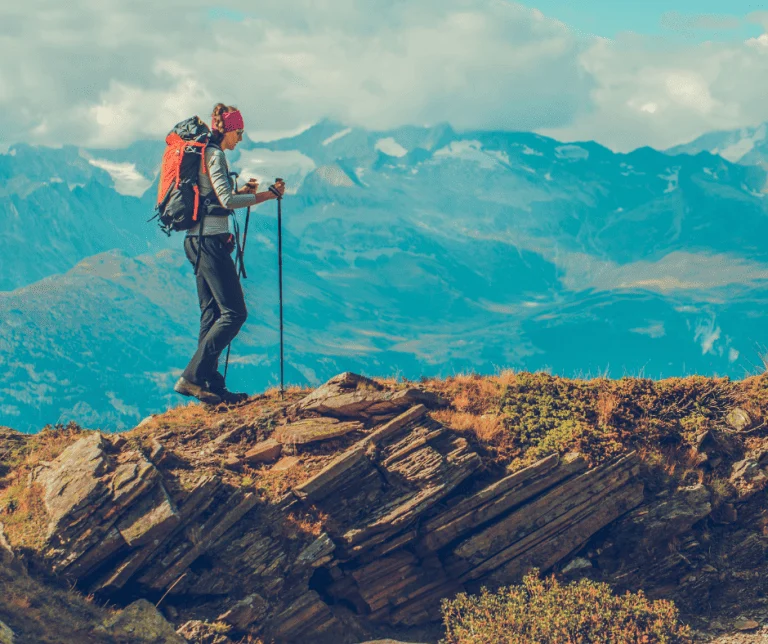
Dressing for your beginner backpacking trip depends in large part on your destination. A September trip to Yellowstone, where nighttime temperatures may plunge below freezing, is quite different from a similar excursion in the Florida Everglades.
That said, you can’t go wrong if you dress in layers. The basic rule is this:
- Your first layer should wick sweat away from your body and consist of a material like silk, merino wool or a synthetic — not cotton.
- Your second layer is where you pile on the insulation with plenty of flannel and fleece.
- Your third layer is water- and wind-proofing and protects you from the elements, like a thin vinyl jacket over a sweatshirt.
However, you can take some liberties. For example, some folks like a heavy vest that insulates their vital organs but prefer to keep their extremities relatively free. A lightweight pair of leggings under denim shorts protects your lower half on chilly mornings and readily tucks away once the sun rises high enough in the sky.
Remember, you must also protect your extremities. Unless you head somewhere where nighttime temperatures are guaranteed to stay above 60 degrees, pack a hat, gloves, thick socks and possibly a balaclava in truly frigid temps.
Jack Shaw is a Senior Outdoors Writer for Modded Magazine. Driven by his passion for writing, Jack loves to traverse the wilderness, travel and explore the unknown. He has over six years of experience writing professionally and loves engaging in new projects. His works have been published in The Travel Magazine, EcoHotels, Duluth Pack and more.
- The Best Pumpkin Patches in Iowa - September 30, 2024
- The 8 Best Indiana Pumpkin Patches - September 30, 2024
- 16 Great Pumpkin Patches in Colorado - March 31, 2025

